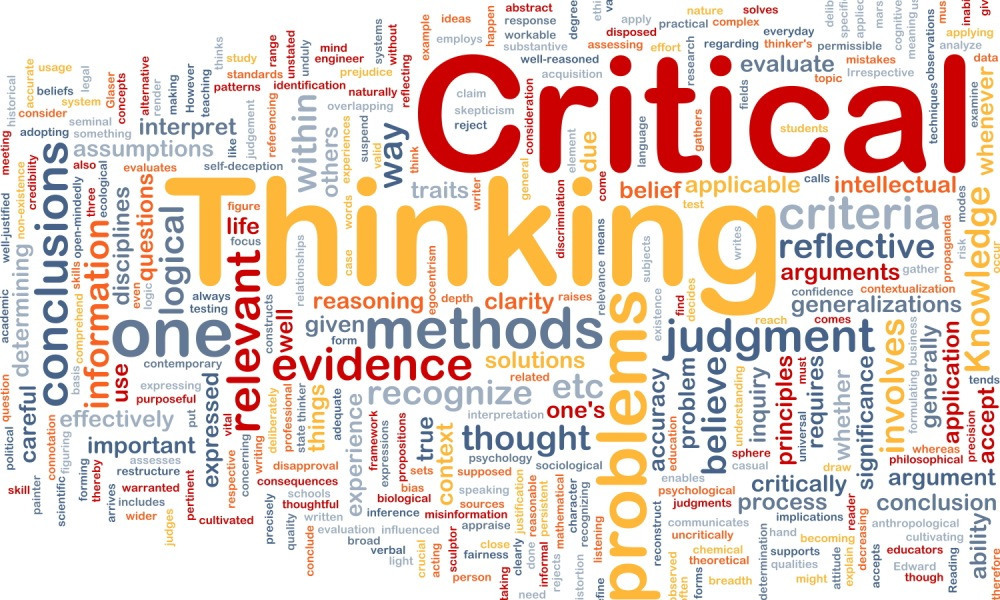There have been ongoing attempts since the 1970s to bed down a curriculum that develops thinking skills.
In recent years a good deal of attention has again been given to the development of thinking skills. Why should we be any more passionate or convinced that a curriculum that builds these skills really does have a place in our schools today than we were 30 years ago?
A changing landscape
What is undeniable is that in large part due to technology, the landscape has changed. The world that the students are navigating, negotiating and attempting to reconcile is fundamentally different. The way in which knowledge is gained, built and shared requires our students to think more than they've ever needed to think before.
Education researchers, policy makers and private enterprise agree that, in addition to content knowledge, students in the 21st Century need to acquire particular skills to equip them for a modern world of work, one of which is the ability to think - and think well.
The Australian Curriculum recognises the importance of the development of these skills through the general capabilities. Critical and creative thinking sits squarely as one of seven general capabilities that are to be developed across the whole curriculum.
The Australian Curriculum is detailed and articulates clearly the critical and creative thinking skills that a child needs to develop as they progress through school. How and where these skills are taught remains the decision of the school.
I have worked in a school where the interdisciplinary strand of thinking was reported on by the PE department (it drew the short straw in the bun fight for who would assess which interdisciplinary skill). In other contexts where I have taught, those with a commitment to content mastery often argue, albeit somewhat vaguely, that thinking is taught explicitly within their discipline so they have it covered.
Learning to think critically
Peter Ellerton, a lecturer in Critical Thinking at The University of Queensland, writes in How to teach all students to think critically ‘let's not assume that students will learn to think critically just by learning the methodology of their subjects. Sure it will help, but it's not an explicit treatment of thinking and is therefore less transferable. A course that targets effective thinking need not detract from other subjects – in fact it should enhance performance across the board.'
Problem-based and inquiry-based learning programs, and concept-based curriculums with a focus on the big ideas at primary and secondary level have provided increased opportunities to focus on the teaching of generic skills. These interdisciplinary learning spaces have carved out time to teach thinking, to step out of the race to cover content and build the generic skills that students need.
In Intellectual Character: What It Is, Why It Matters, And How to Get It, Ron Ritchhart writes of developing explicit and goal-driven routines for thinking in classrooms. 'For these routines to be effective, they usually consist of only a few steps, are easy to learn and teach, can be scaffolded or supported by others, and get used over and over again in the classroom,' (Ritchhart, 2002)
Many familiar classroom practices and instructional strategies can be thought of as thinking routines if they are used over and over again in a way that makes them a core practice of the classroom. For example, KWL (What do you know? What do you want to know? What did you learn?), brainstorming, pushing students to give evidence and to reason by asking them ‘Why?', classroom arguments or debates, journal writing, questioning techniques or patterns that are used repeatedly, and so on.

Image © Shutterstock/Monkey Business Images
Ritchhart also sees routines as a major enculturating force for communicating expectations for thinking as well as providing students with the tools that they need to engage in that thinking.
Thinking routines help students answer questions they have:
- How are ideas discussed and explored within this class?
- How are ideas, thinking, and learning managed and documented here?
- How do we find out new things and come to know in this class?
As educators, we need to uncover the various thinking routines that will support students as they go about this kind of intellectual work, or enact new ones if such routines are not readily present in our practice.
Scope and sequence curriculums that define thinking, programs that make time for the teaching of thinking and routines and strategies that are employed to allow students to demonstrate their thinking are all progress towards recognising the place of a ‘thinking curriculum' in our schools. The challenge that remains is that of assessment.
Assessing thinking skills
To support schools to implement the CCT (Critical and Creative Thinking) curriculum, the Victorian Department of Education and the Victorian Curriculum and Assessment Authority (VCAA) developed an online assessment tool.
There is recognition that we need to understand more about how students' thinking, both critical and creative, develops and how that development can be supported. The Australian Council for Educational Research (ACER) views the development of innovative assessment as fundamental to conceptualising this work.
We are currently working on the development of several assessments of thinking. Our most innovative is one that is attempting to measure creative thinking.
Assessment is a term that many would see as antithetical to creativity. The idea of sitting a test seems, at face value, to be everything that is not creative. But ACER views assessment as a tool of innovation and reform.
Gaining an accurate picture of a child's current creative capability is essential to knowing how to tailor the child's educational experiences to support his or her growth. This should be the goal of any creativity assessment. This information will allow educators and researchers to devise ways to support and foster creative development in young people, and allow us to be confident that we are indeed providing the strong educational base that they require for their future.
We are currently researching aspects of critical and creative thinking that are feasible to assess in a school context and are developing an assessment framework. The assessment framework for critical and creative thinking and sample assessment tasks that we develop will support future assessments of thinking.
We are committed to expanding teachers' understanding of thinking, their ability to develop effective interpretations of critical and creative thinking, and their capacity to create situations in their classroom that prompt thinking, nurture and reward it.
We welcome Teacher readers to get in touch to share ideas about how they are assessing creative or critical thinking in their classrooms.
Stay tuned for a follow-up to this article, exploring how one school is assessing creative and critical thinking.
References
Ritchhart, R. (2002). Intellectual character: What it is, why it matters, and how to get it. San Francisco, CA: Jossey Bass.
Think back to a regular school day. What familiar practices and instructional strategies do you use that incorporate critical and creative thinking?
How can you ensure that you make them a core practice in the classroom?
Visit ACER's Centre for Assessment Reform and Innovation for more information about initiatives to lead new thinking, metrics, technologies and assessment resources and how to get involved in the Rolling Summit.



